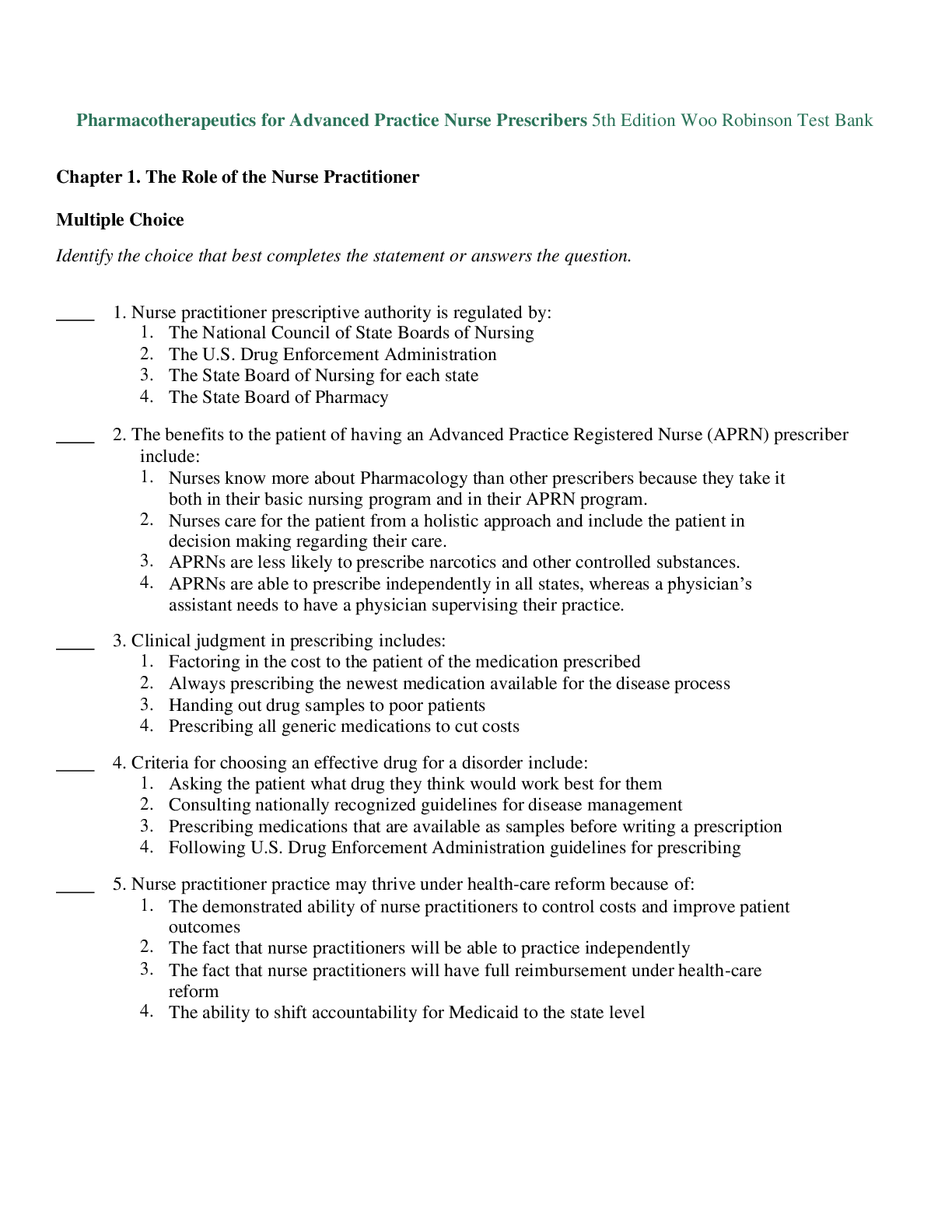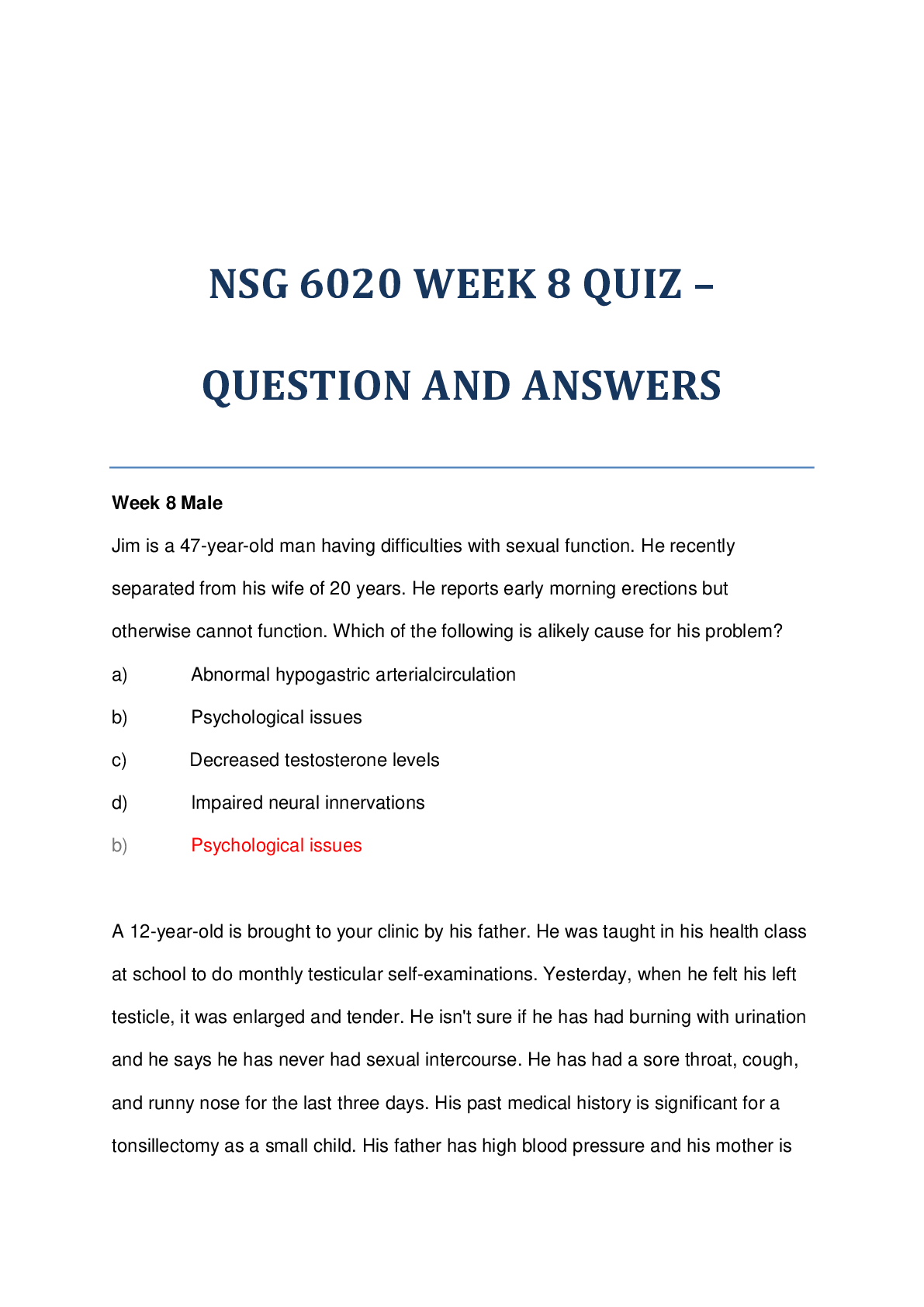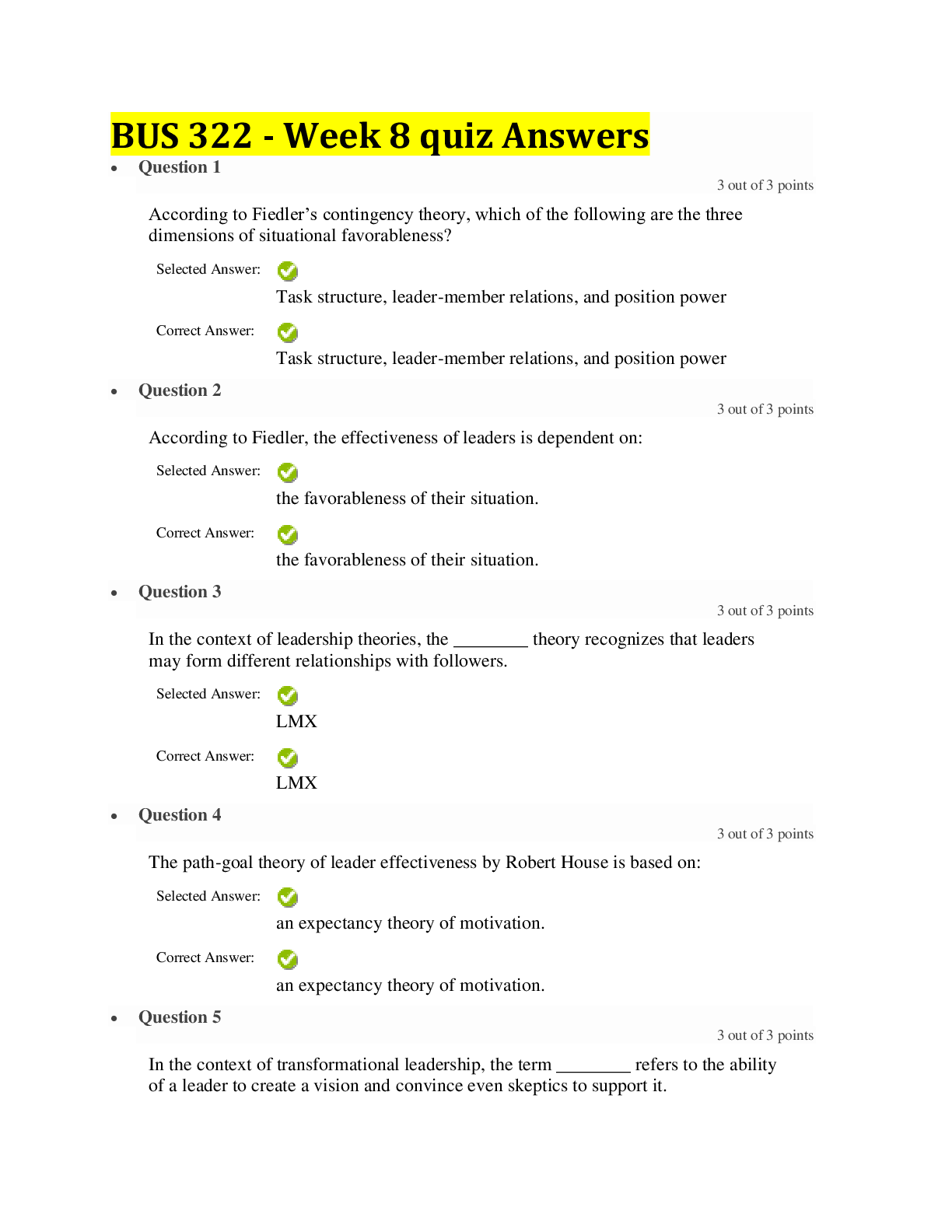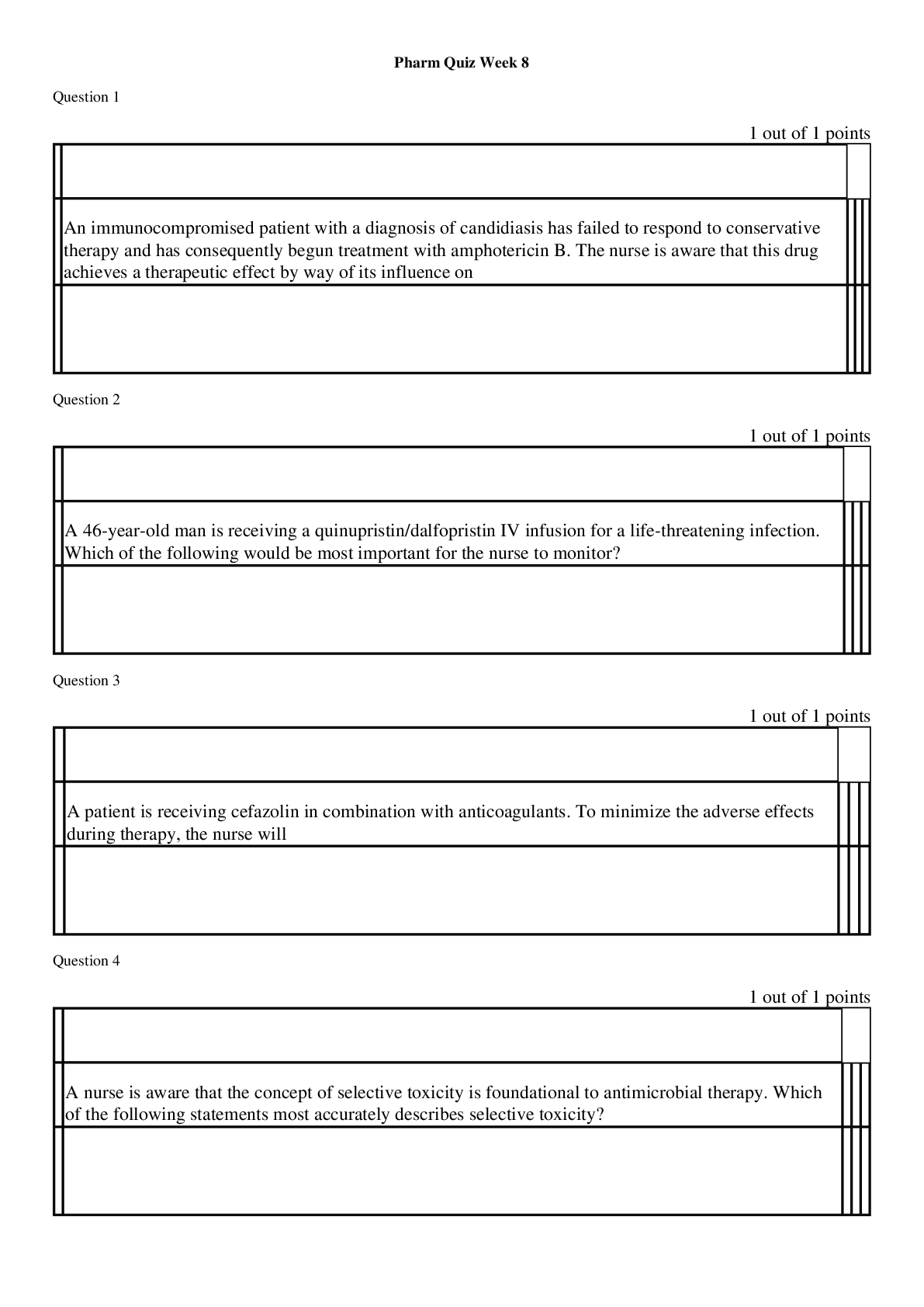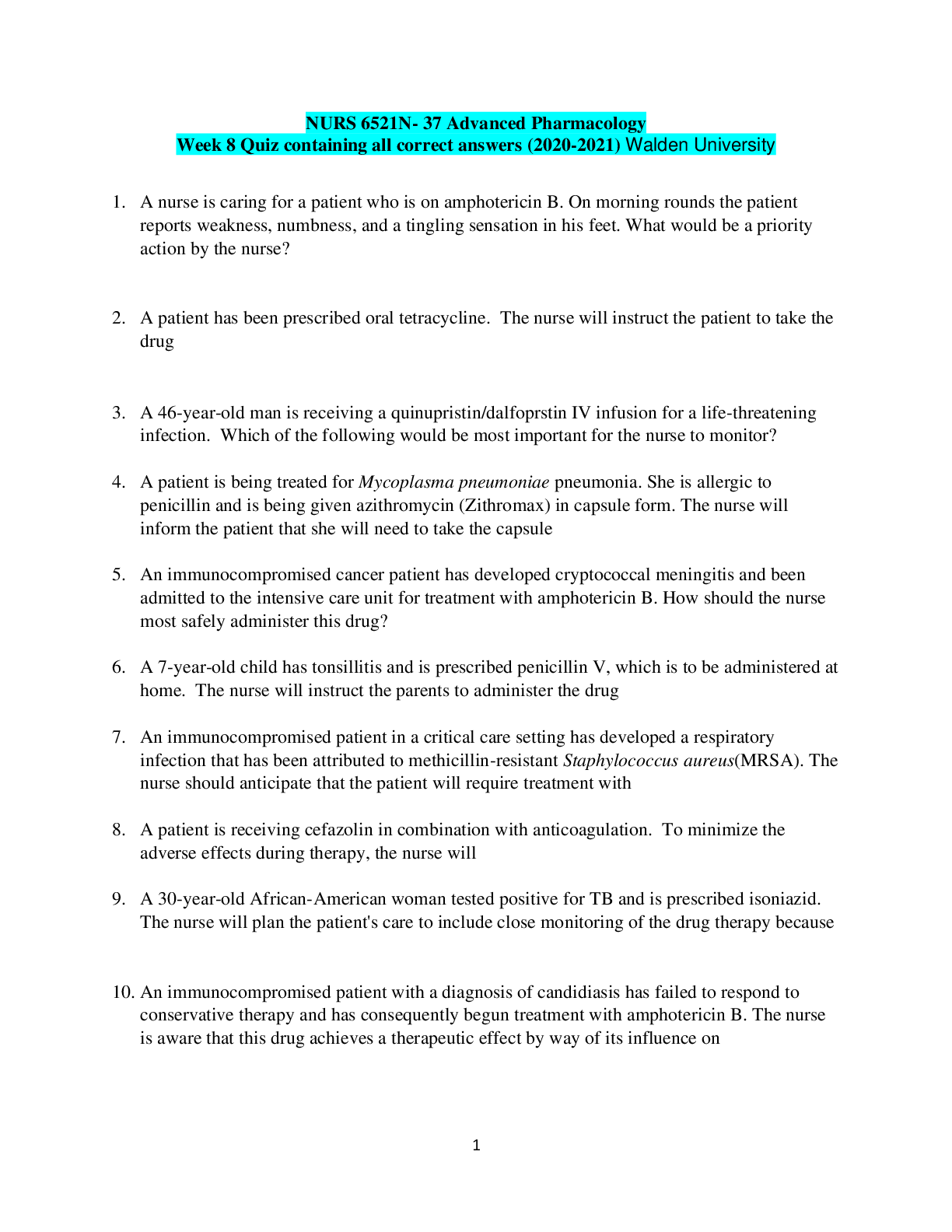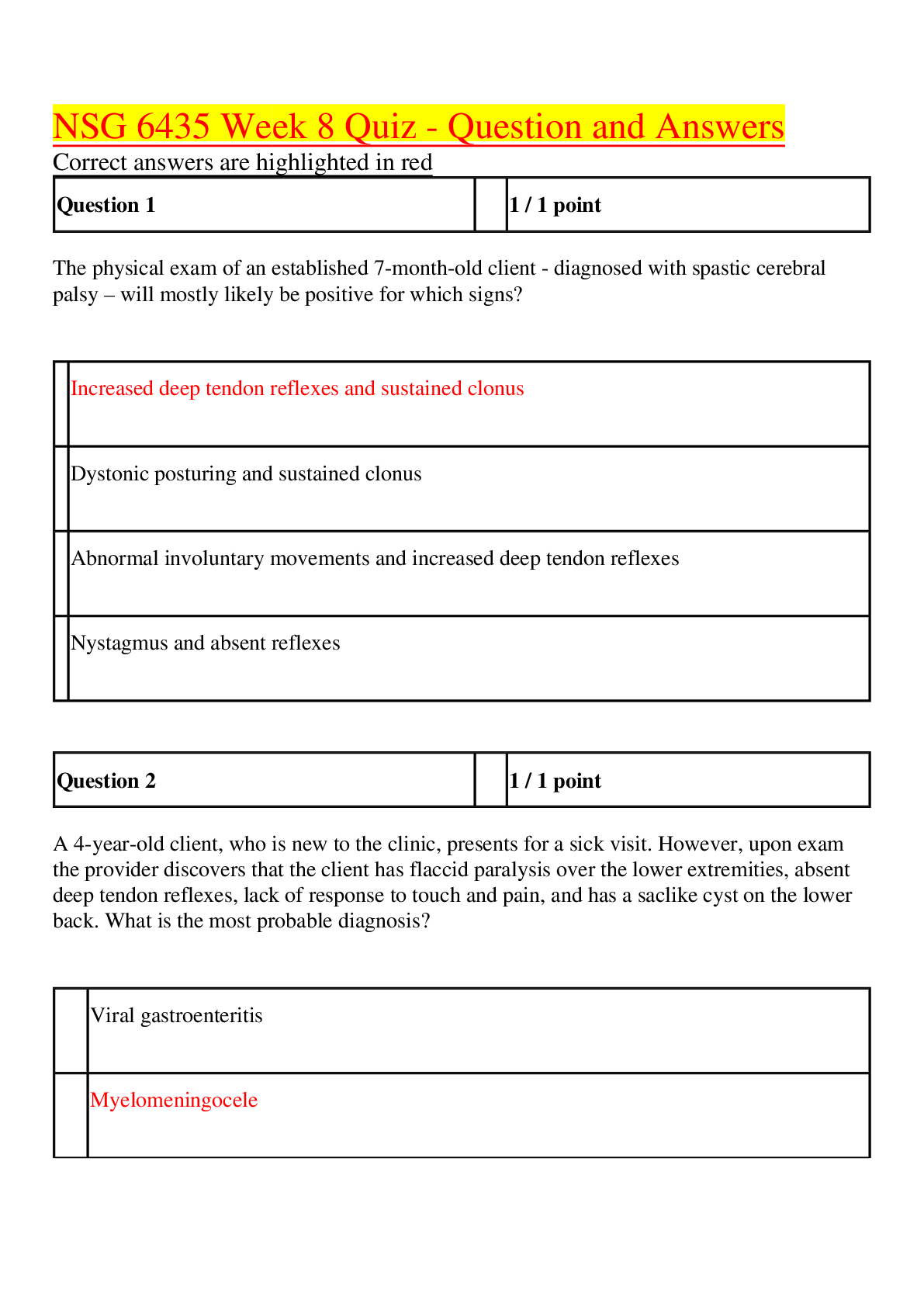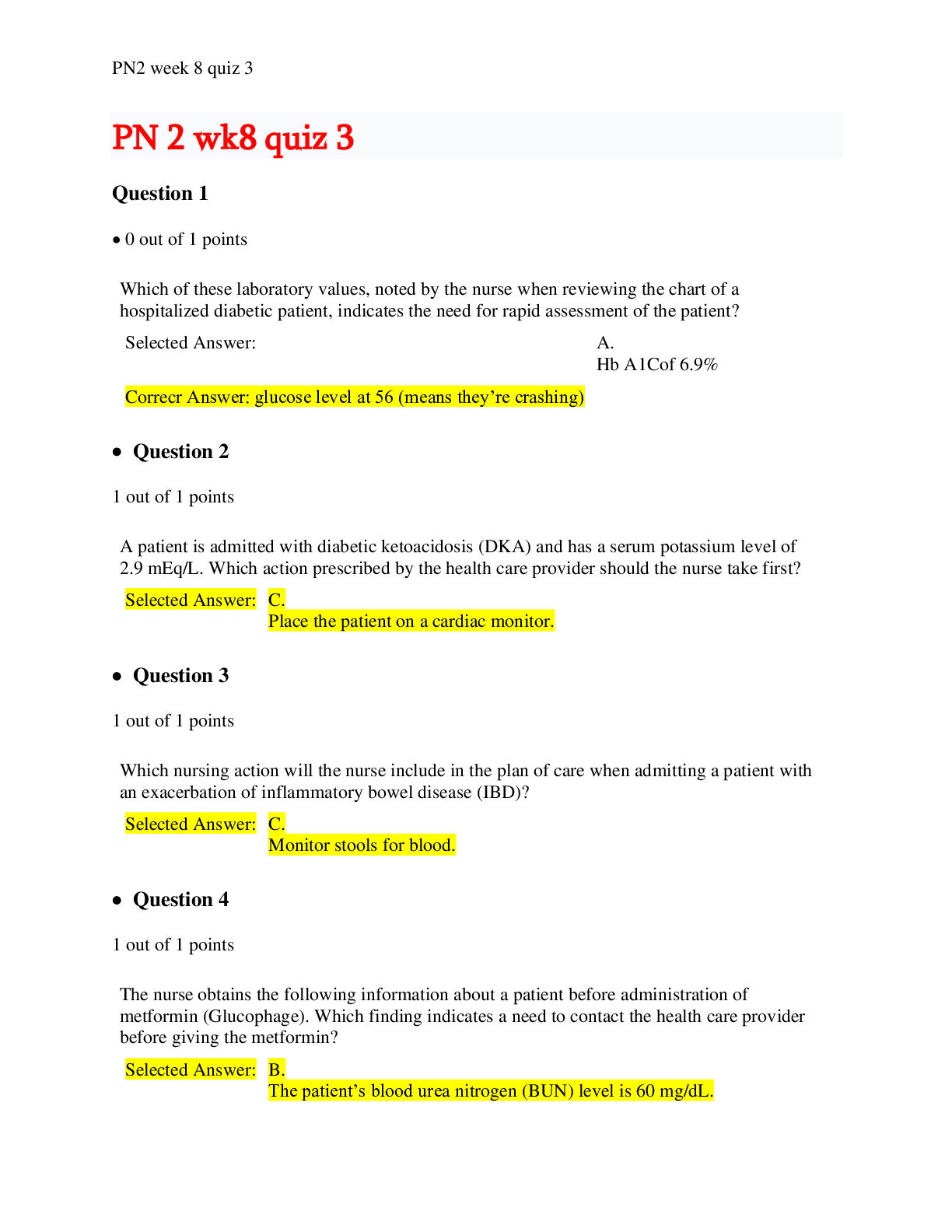*NURSING > QUESTIONS & ANSWERS > NURS 6541 Week 8 Quiz (All)
NURS 6541 Week 8 Quiz
Document Content and Description Below
QUESTION 1 Which of the following scenarios is suspicious for the development of neonatal jaundice with potential for kernicterus? a. A 7-day-old breastfed infant with yellowing of the sclera b... . A 7-day-old infant with AB+ blood whose mother has B+ blood c. A 7-hour-old infant who is breastfed, is alert, and has normal skin tone d. A 7-hour-old infant who is Rh positive and whose mother is Rh negative 1 points Saved QUESTION 2 Which of the following statements regarding infants with PKU is true? a. They require special infant formulas. b. They are seriously ill in the newborn period. c. Breastfeeding is contraindicated. d. Aspartame (NutraSweet) is a preferred sugar substitute for these children. 1 points Saved QUESTION 3 Abdominal pain and vomiting are troublesome in children with type 1 diabetes because these symptoms can occur in which of the following dangerous conditions? a. Ketoacidosis b. Parasitic gastroenteritis c. Hyperglycemia d. Autoimmune response in the pancreas 1 points Saved QUESTION 4 A 2-year-old with sickle-cell anemia presents to your office with a fever of 103.4°F, lethargy, and malaise. The mother tells you she stopped giving the child the amoxicillin prescribed by his hematologist because she is concerned about antimicrobial resistance. Which of the following diagnoses should be considered in this scenario? a. Acute chest syndrome b. Pneumococcal bacteremia c. Vasocclusive crisis d. Hemarthrosis 1 points Saved QUESTION 5 Children and adolescents with acquired hypothyroidism often have: a. Decreased linear growth b. Third fontanelles c. Soft, silky hair d. Advanced bone age 1 points Saved QUESTION 6 Iron deficiency anemia is most common in what age group? a. 6 to 9 months b. 9 to 24 months c. 18 to 36 months d. 4 to 5 years 1 points Saved QUESTION 7 Which of the following is NOT a standard of care for children with sickle-cell anemia? a. Annual complete blood count (CBC) b. Bimonthly liver and kidney function testing c. Collaboration with a pediatric hematologist d. Routine wellness care with special attention to immunization status 1 points Saved QUESTION 8 Which of the following children is at risk for lead poisoning? a. A child who lives in a home with copper water pipes b. A child whose sibling has an elevated lead level c. A child who lives in public housing built in 1999 d. A child whose father is a hunter 1 points Saved QUESTION 9 Which of the following statements regarding galactosemia is true? a. The disease is X-linked. b. Infants with galactosemia are ill at birth. c. The disease is due to a buildup of an amino acid. d. Vomiting, seizures, and lethargy start in the second and third weeks of life. 1 points Saved QUESTION 10 A 14-month-old is diagnosed with iron deficiency secondary to poor iron intake. Her hemoglobin is 8.7 g/dl. You counsel regarding the sources of dietary iron. The most appropriate next step is: a. Give intramuscular ferrous sulfate. b. Administer oral ferrous sulfate 3–6 mg/kg divided three times daily. c. Measure Hgb again in 1 month after dietary changes. d. Refer for a hematology consult. 1 points Saved [Show More]
Last updated: 2 years ago
Preview 1 out of 4 pages
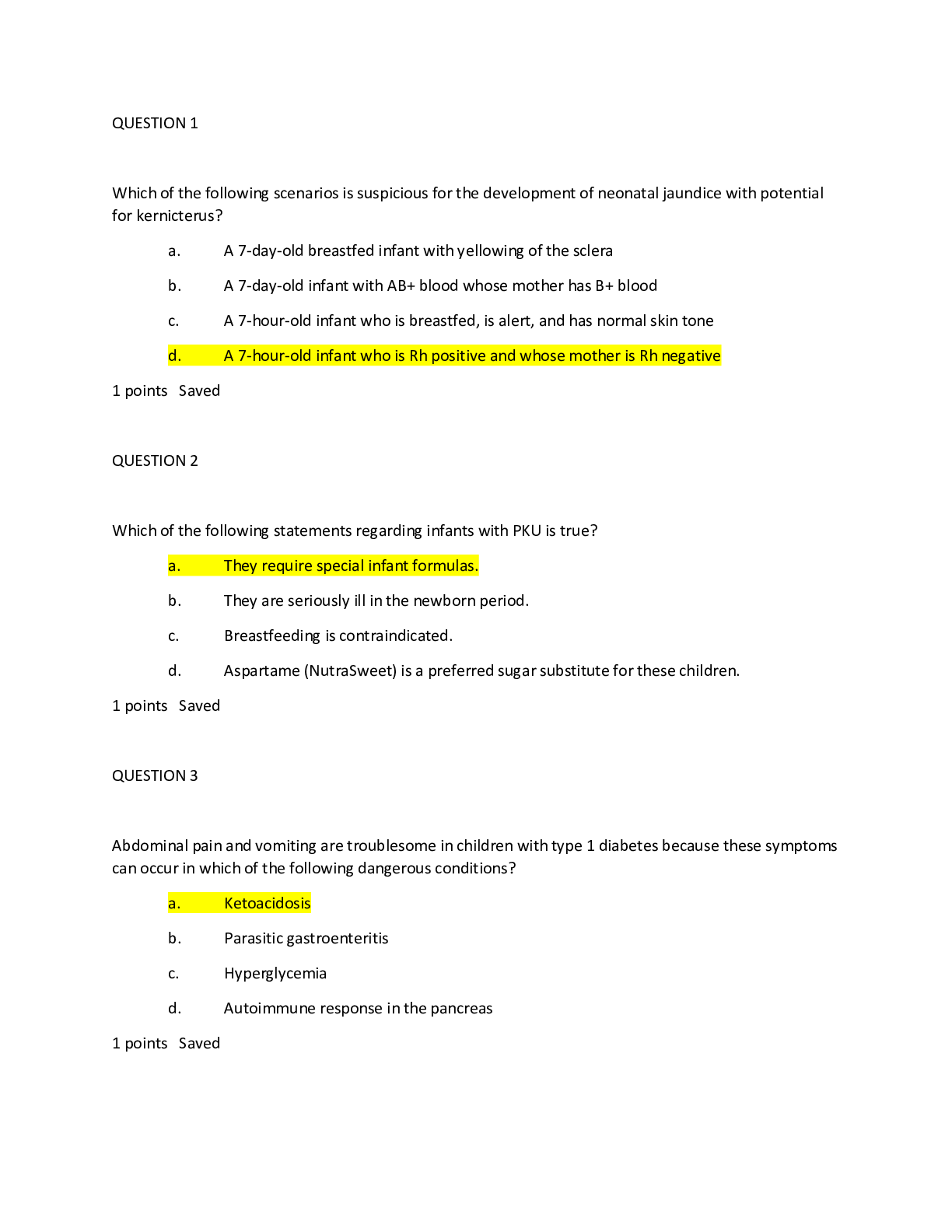
Buy this document to get the full access instantly
Instant Download Access after purchase
Buy NowInstant download
We Accept:

Reviews( 0 )
$7.00
Can't find what you want? Try our AI powered Search
Document information
Connected school, study & course
About the document
Uploaded On
Apr 06, 2020
Number of pages
4
Written in
Additional information
This document has been written for:
Uploaded
Apr 06, 2020
Downloads
0
Views
127




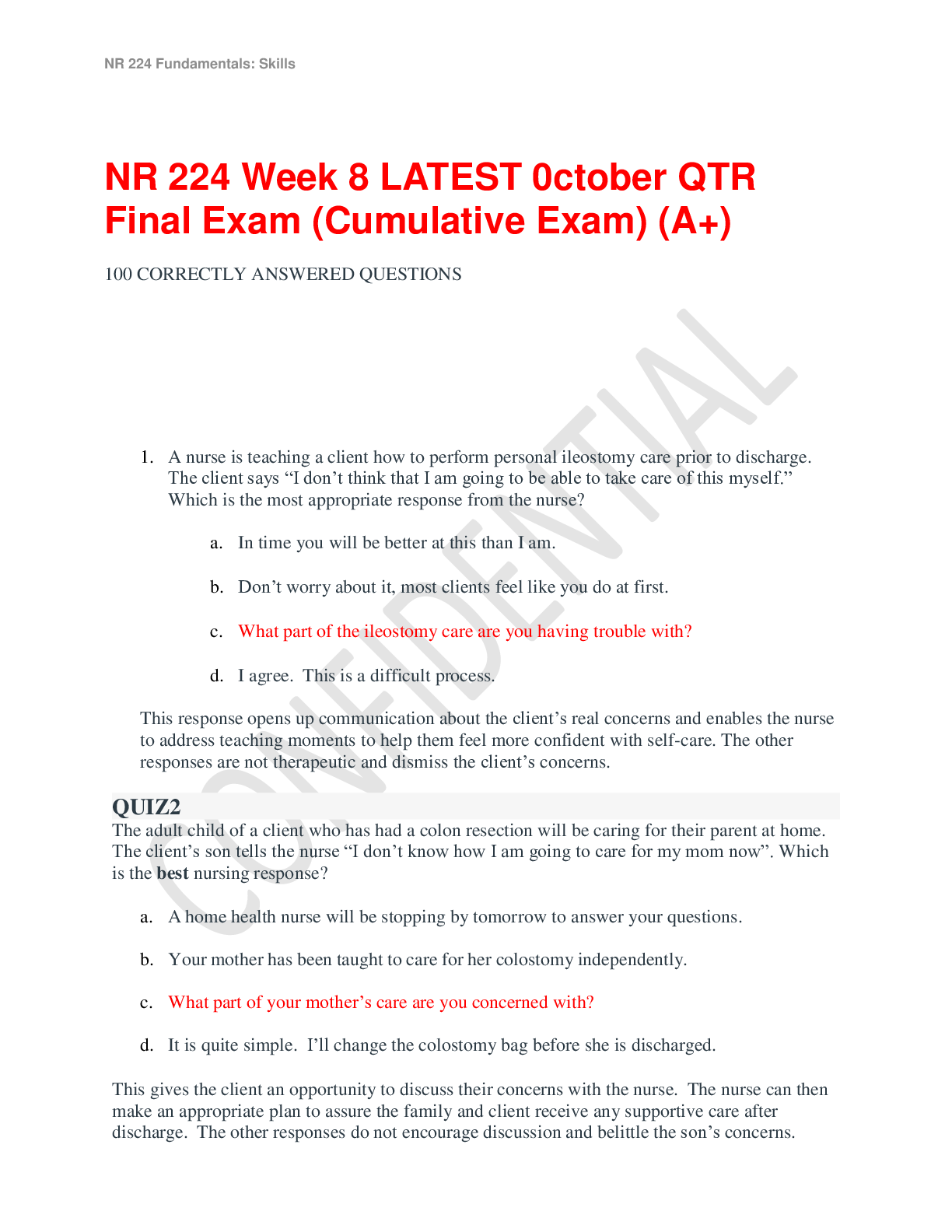


.png)




